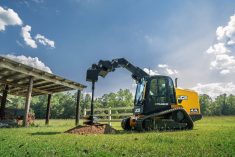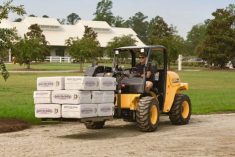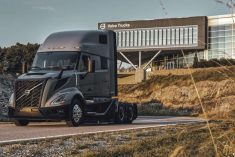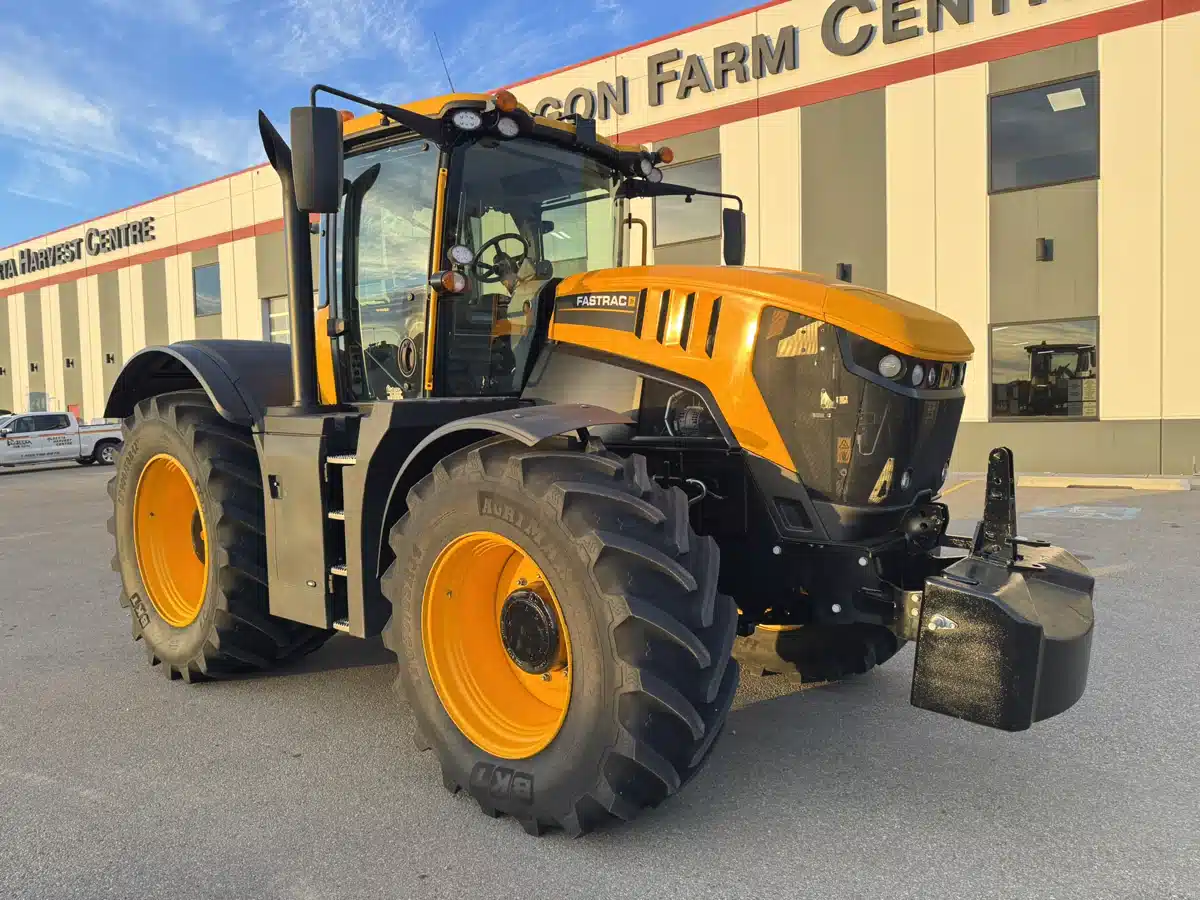At the 2022 ConExpo construction equipment show being held in Las Vegas March 14-18, U.K.-based JCB will have something new to show off at its display. The company, which produces light construction equipment and the unique Fastrac ag tractor, is using the event to debut a prototype hydrogen-fuelled internal combustion engine.
“It’s a solution that delivers power in the same way in combustion engines, but uses none of the fossil fuels,” says JCB CEO Lord Bamford.
JCB says it put together a team of 100 engineers over the last two years for the purpose of designing a new internal combustion engine (ICE) from the ground up to burn hydrogen.
Read Also

Claas brings 1000 Series SP forage harvesters to Canada
In mid-August, Claas unveiled its new line of Jaguar forage harvesters at an event in Visalia, California, deep in the heart of that state’s dairy region.
“This is not a conversion — this is brand new combustion technology,” says Ryan Ballard, engineering director, powertrain at JCB. “We’ve had to look at almost every facet of the engine, and we’ve completely engineered it to run on hydrogen. The components are familiar and common. The big difference is the fuel. We inject it into the engine. We lower the pressure and temperature, and that gives us a clean burn and a zero-emission product.”
JCB has had two working prototype machines with the hydrogen engine running at its test facility. The company has also developed a refuelling tanker system to deliver fuel to the job site in the same way a fuel truck would deliver diesel fuel. The process of refilling a hydrogen machine is very similar to refilling one powered by propane.
As part of its R&D process, the company says it has now built 50 hydrogen engines and they have proven they can deliver the same power as a comparable diesel engine.
But JCB isn’t the only company developing a hydrogen-fuelled internal combustion engine. Other equipment brands, as well as automakers such as Toyota, have made no secret of their work on developing hydrogen as a fuel to power conventional ICE drivelines.
“We continue to partner with our engine provider, which is FPT, around hydrogen,” said Marc Kermisch, chief digital information officer and interim chief technology and quality officer at CNH Industrial, which is the parent company of Case IH and New Holland. “They continue to make investments in hydrogen for their truck and bus vehicles. And we’re working with them on how that can trickle down (to ag equipment).”
In the past decade, CNH had developed a concept hydrogen fuel-cell tractor, which it showed at two consecutive Agritechnica machinery shows in Germany. Unlike ICE drivelines, fuel-cell systems convert hydrogen to electricity to power all-electric drivelines.
“Our biggest challenge on hydrogen at the time we released that tractor at Agritechnica was supply,” Kermisch adds. “The cost of hydrogen was higher than diesel.”
However, there are new emerging technologies that promise to significantly improve the efficiency of hydrogen production, reducing future production costs. And even the current cost of “green hydrogen” (that is, hydrogen produced with alkaline electrolyzers) is already cheaper than natural gas in several European countries, according to data from BloombergNEF.
According to at least one report, the cost of hydrogen could fall to as little as roughly a quarter of its current price by 2030. And with the kind of stable production system required to produce hydrogen for fuel, it could offer much less price volatility than gasoline or diesel does today.
The ability to adapt ICE technology to hydrogen makes it a promising alternative to conventional diesel engine drivetrains, and this also makes it easier to retrofit to current equipment designs than the previous attempts at hydrogen fuel-cell technology.
“In the early days, we believed the only technology available to us was the fuel cell,” said Tim Burnhope, chief innovation and growth officer at JCB. “So we got on and made a fuel-cell prototype 20-ton excavator. We started to understand the complex challenge of putting a fuel cell in a piece of construction equipment. Construction equipment machines need energy quickly, whereas fuel cells were better suited to a more gentle environment. We started to realize fuel cells maybe weren’t too good for response. They were too expensive and too complicated for the market we serve.”

JCB claims its commitment to reducing emissions from its conventional diesel engines goes back almost 25 years. The company says the latest versions have already delivered a 97 per cent reduction in NOx (nitrogen oxide and nitrogen dioxide) emissions and a 98 per cent reduction in particulates since 1999. Today, JCB’s diesel-powered machines also emit 50 per cent less carbon dioxide compared with those manufactured as recently as 2010. But it’s clear everyone in all automotive and equipment sectors believes there is still a need to go further to meet global emission reduction initiatives.
Says JCB’s Bamford, “We’re proving daily that hydrogen does work, that it’s a clean, renewable, transportable fuel, capable of delivering the power our industry needs quickly and efficiently without the carbon. We’re working towards a hydrogen future with zero emissions.”
While the company wanted to reveal its hydrogen internal combustion engine to the public and announce its zero-emissions future plans based on hydrogen, it hasn’t yet released any detailed specifications on the engine or provided a date when it will go into commercial production. Stay tuned for developments.





















